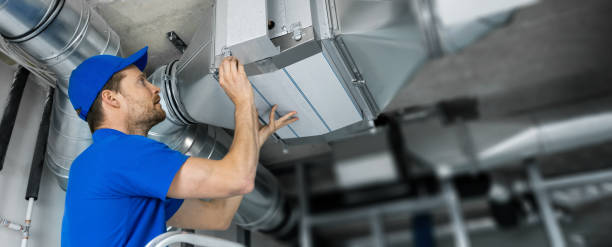What Is HVAC
by siteadmin

HVAC systems provide heating and cooling to residential and commercial spaces alike, while also serving as an essential element in managing indoor air quality.
Ductwork is an integral component of HVAC systems. Rigid sheet metal ducts are often the go-to choice in homes; these durable yet easy-to-clean options offer less chance for mold growth.
Heating
Understanding HVAC may seem intimidating at first, but it doesn't need to be. Gaining an understanding of heating and cooling as well as all of its component products will enable homeowners to choose a maintenance plan tailored specifically for their comfort level.
An HVAC system comprises devices such as furnaces, air conditioners and heat pumps that improve indoor air quality through mechanical ventilation. They may also include ductwork and thermostats to monitor temperatures.
Furnaces use fuel sources like propane or natural gas to produce heat that warms a room or building. Air conditioners cool homes by turning refrigerant into liquid that absorbs and transports heat; then using a blower, circulating that cool air throughout ductwork piping systems. In addition, HVAC equipment like air filters and duct cleaners help keep indoor air cleaner by filtering out pollutants; furthermore programmable thermostats help save on energy bills by controlling when systems run and changing the temperature setting accordingly.
Cooling
Home and workplaces that do not live in climates with uniformly comfortable weather require HVAC equipment for comfort. HVAC units work by heating or cooling indoor air, controlling humidity levels, cleaning it as needed and filtering out particles from circulation. They may also provide ventilation and filter out particles.
Heating equipment typically uses electricity, propane gas or oil to warm a space while cooling equipment uses refrigerant to move heat from warmer areas into cooler ones. Most residential systems feature a central air unit containing furnace, boiler or heat pump alongside ductwork to disperse heated or cooled air throughout their space.
HVAC stands for "heating, ventilation and air conditioning", meaning providing fresh air from outdoors into spaces by either bringing it in through windows or venting out indoor air. This helps ensure an ideal indoor air quality and thermal comfort experience while eliminating unpleasant odors, smoke, heat, carbon dioxide particulates or moisture build-up in spaces like data centers where HVAC provides cooling to essential computer hardware and servers.
Ventilation
ASHRAE defines ventilation as "the process of moving outdoor air in and out of an occupied space to control its temperature, humidity and contaminants". Ventilation also involves providing fresh air from outside to replace stagnant air inside spaces – it plays an essential role in providing comfort and indoor air quality (IAQ).
Ventilation systems consist of ducts to bring outside air in, blowers to move it around, and filters that help control odors and pollutants. Your choice of system depends on many factors including budget, home size and personal preferences.
People may prefer window units because they take up less space and are cheaper, while also being energy efficient; however, leaving it open during the day poses security risk and may reduce energy efficiency. Others opt for split systems with indoor and outdoor units which tend to be more energy efficient as well as quieter than window units.
Controls
HVAC systems use various controls and equipment to manage building temperatures, ventilation, air quality and energy efficiency. These controls enable owners to maximize performance while keeping occupants comfortable and productive.
Many HVAC controls rely on electricity and use electrical signals to run various pieces of equipment within an operation, including actuators that open or close dampers in ventilation ducts and fans, controllers that monitor temperatures using sensor data input, as well as actuators which open or close dampers inside ventilation ducts or fans, actuators which open or close dampers inside ventilation ducts, as well as temperature monitors that monitor and adjust temperatures based on data received from sensors.
Controls may be operated manually or on a set schedule depending on the system and location. Smart HVAC controls connected to IoT hubs may learn local weather forecasts to automatically optimize temperature settings – saving both time and resources; as well as being an excellent way to manage your home while you're away for long periods.
https://www.saltairsystems.com/
air conditioning replacement layton ut
HVAC systems provide heating and cooling to residential and commercial spaces alike, while also serving as an essential element in managing indoor air quality. Ductwork is an integral component of HVAC systems. Rigid sheet metal ducts are often the go-to choice in homes; these durable yet easy-to-clean options offer less chance for mold growth. Heating…
Recent Posts
- Condon Total Comfort, Inc. Offers Top-notch HVAC Services
- Clearing the Air: Duct Cleaning Alexandria Debunks Common Myths Surrounding Air Duct Cleaning
- Clearing the Dust: Duct Cleaning Louisville KY Shares Tips to Make Your Home Less Dusty
- Exploring the Drawbacks of Duct Cleaning: Insights from Air Vent Cleaning Charlotte
- Grand Prairie HVAC Service: Your Trusted HVAC Company in Texas
